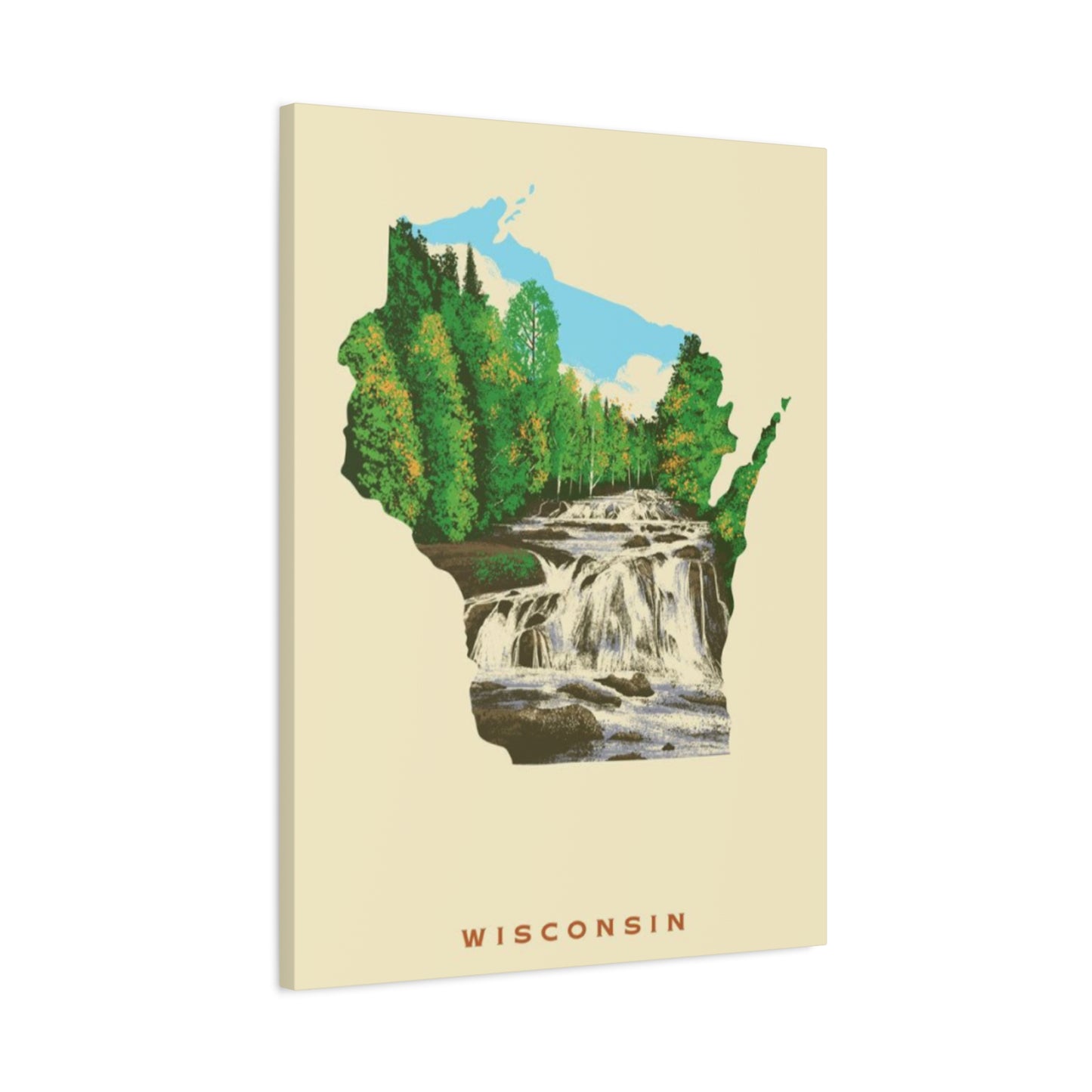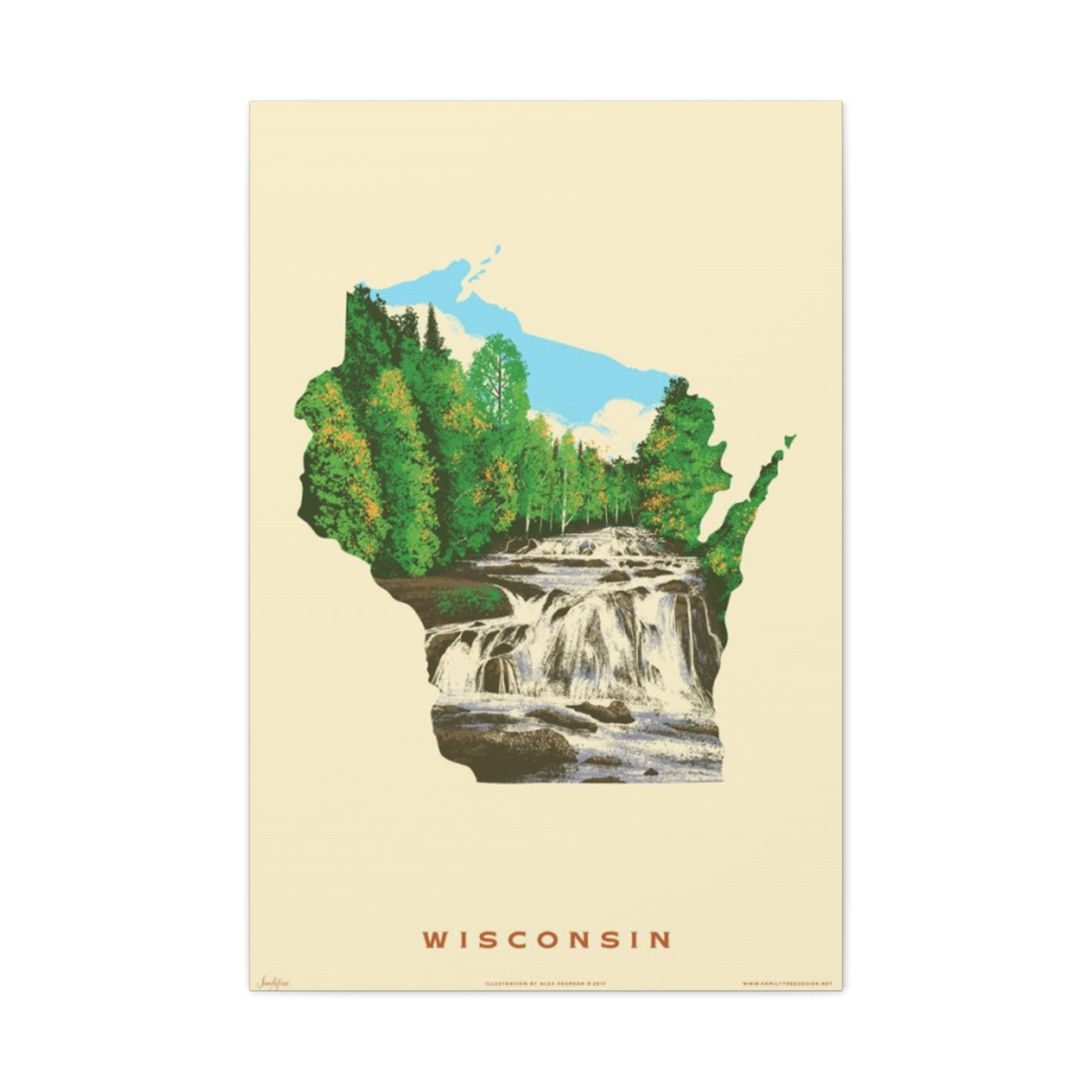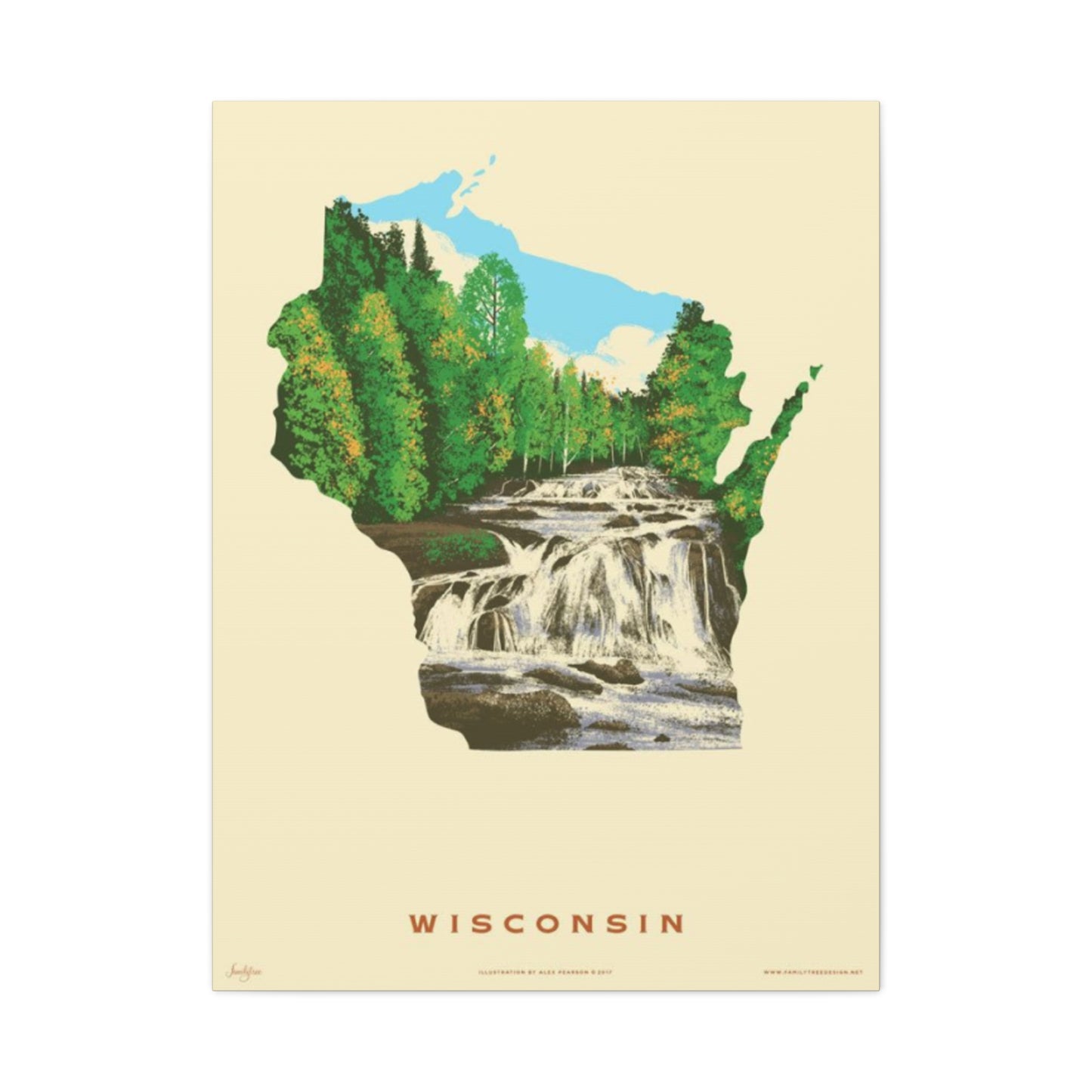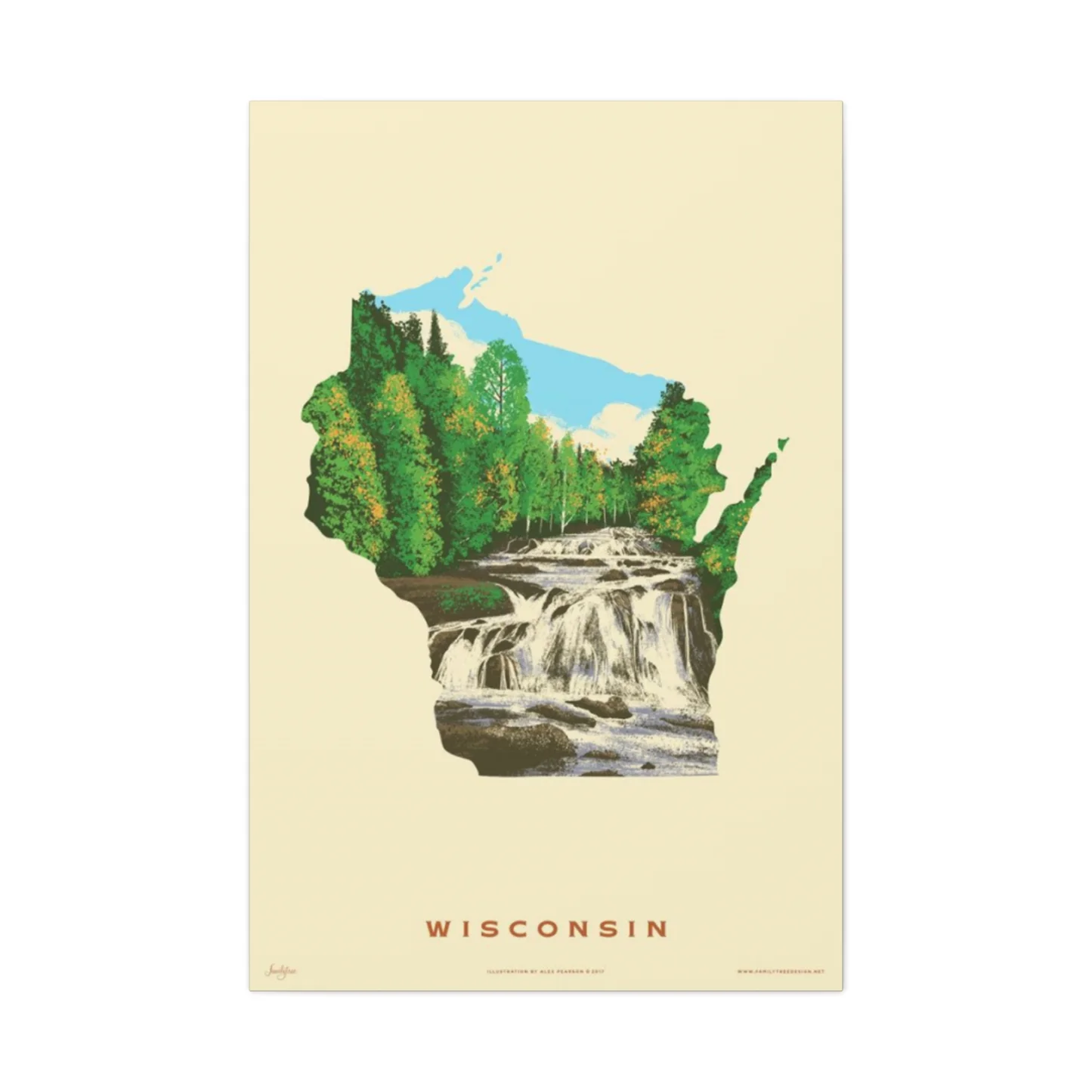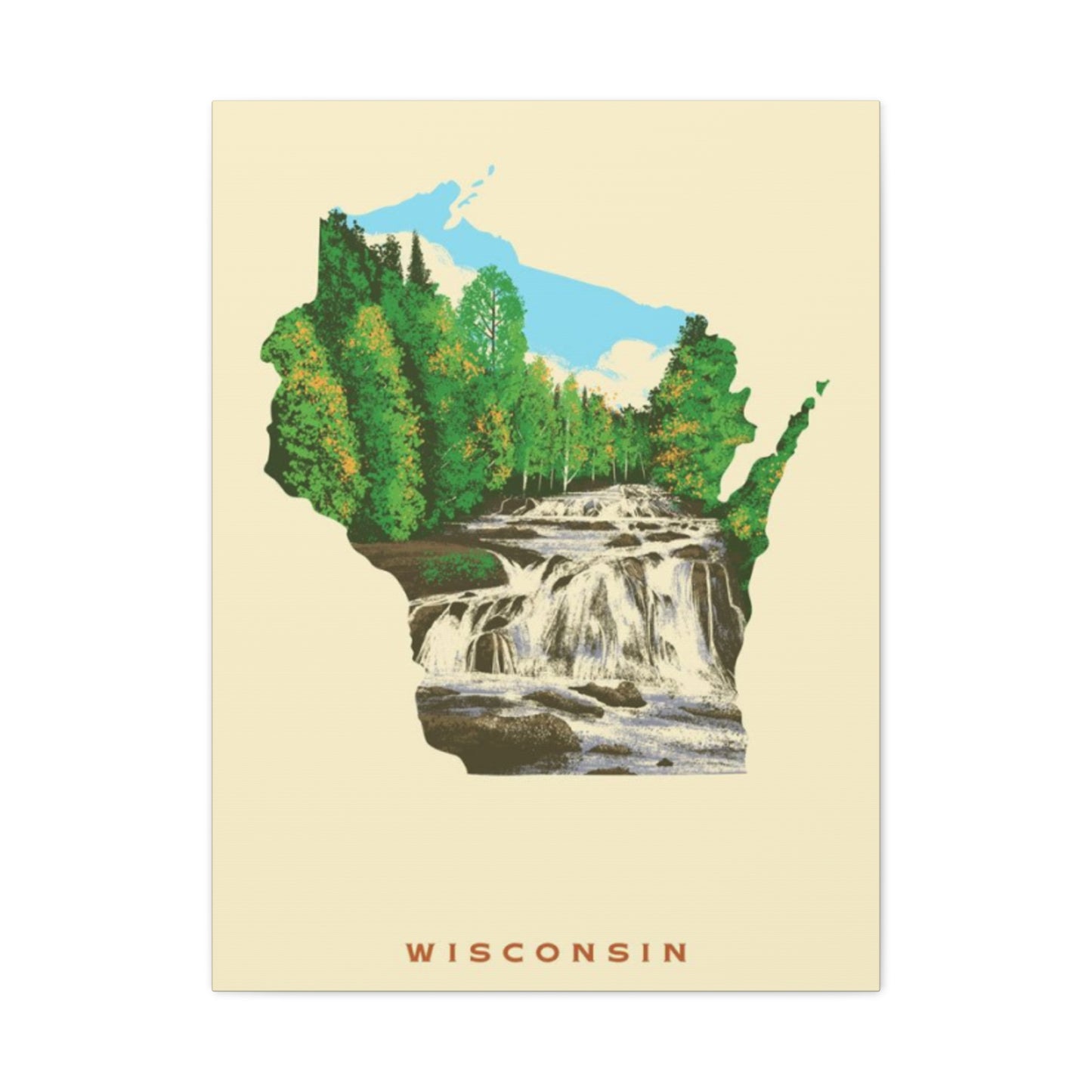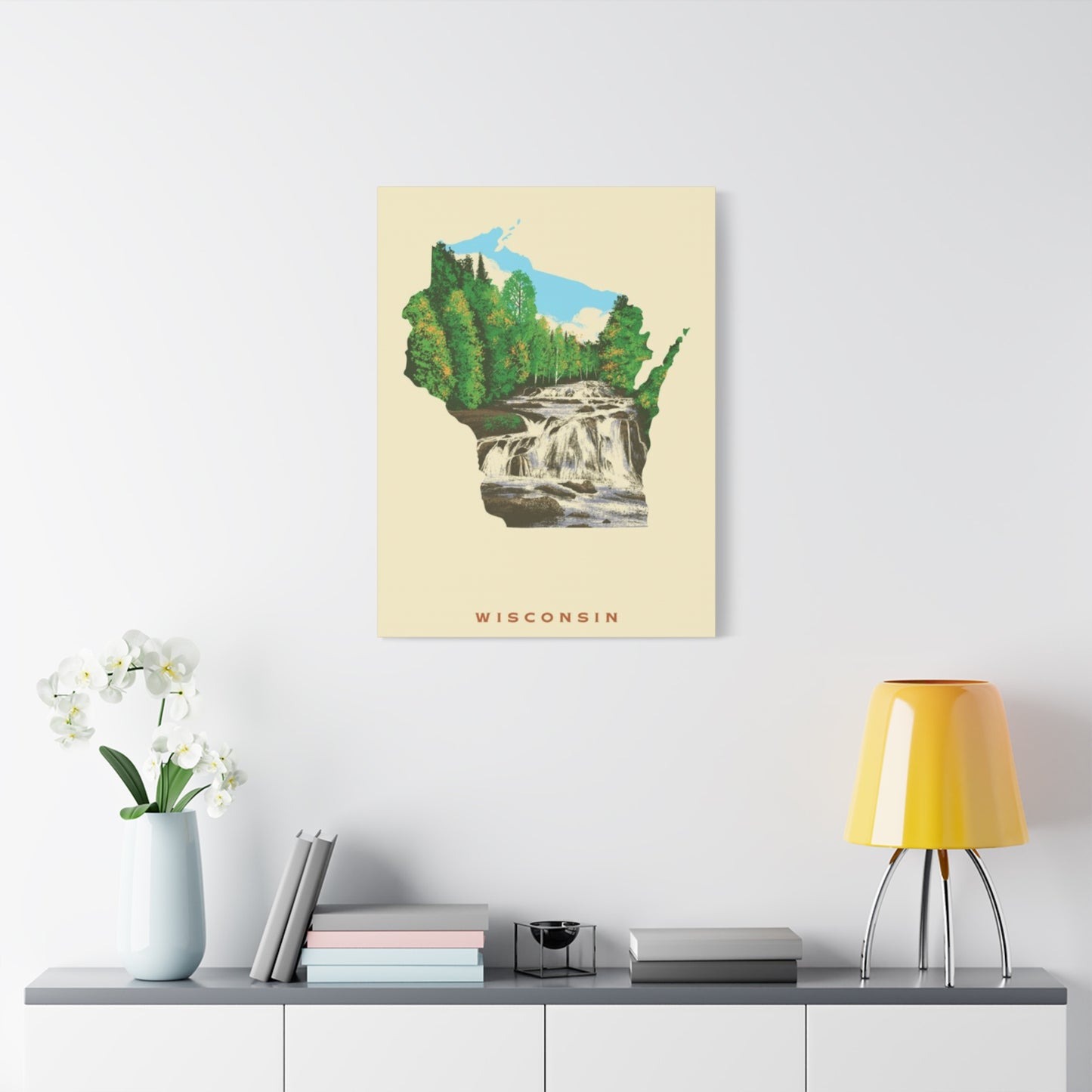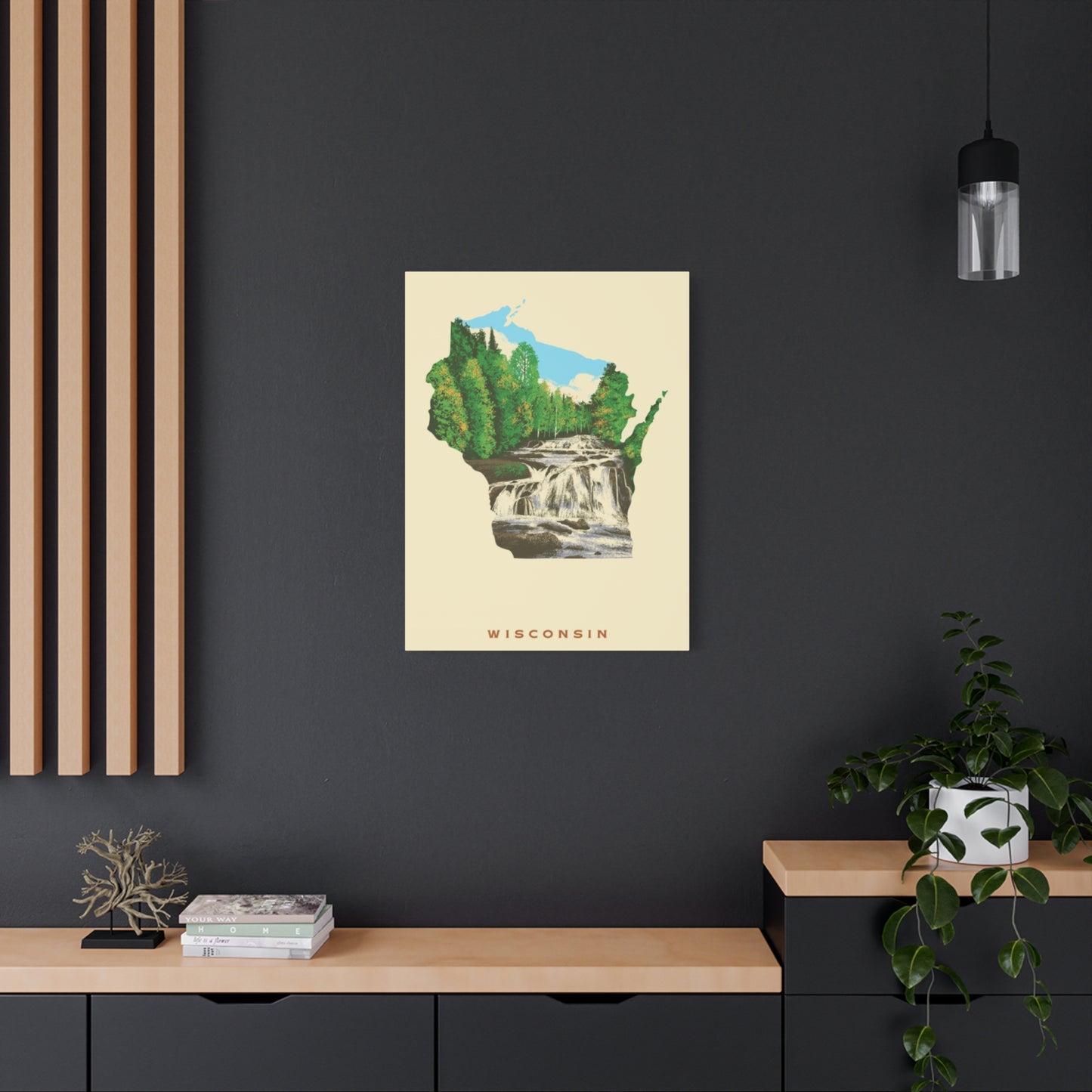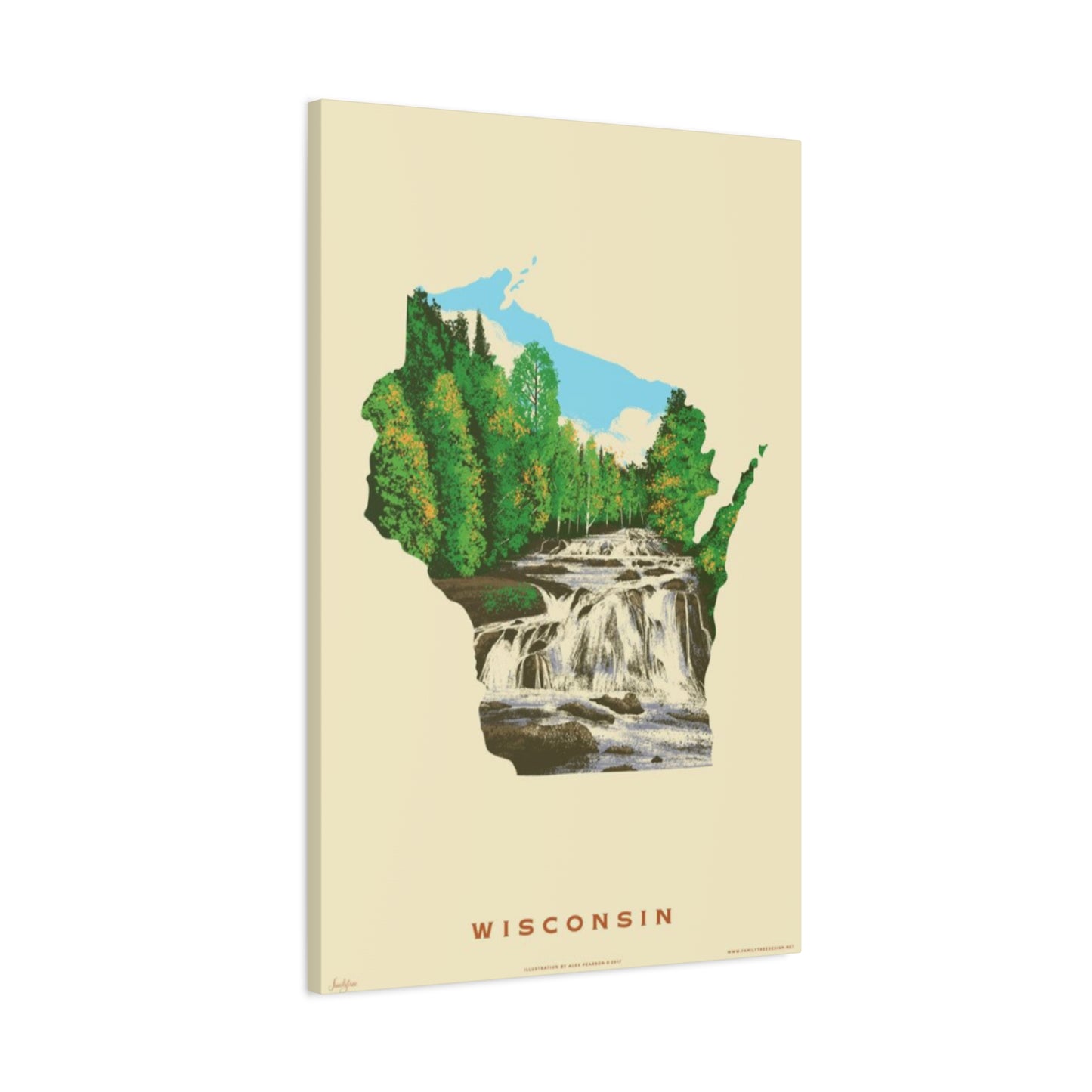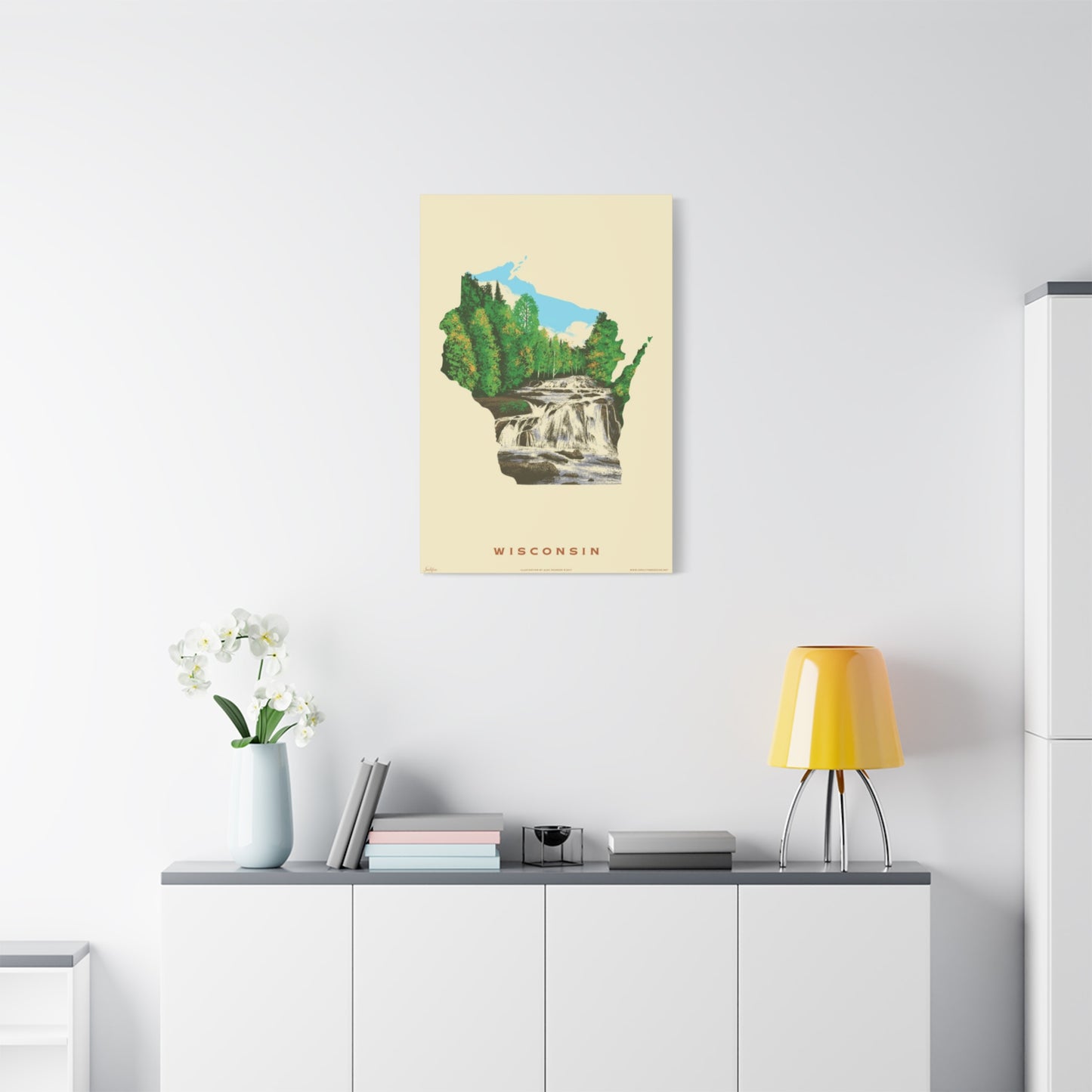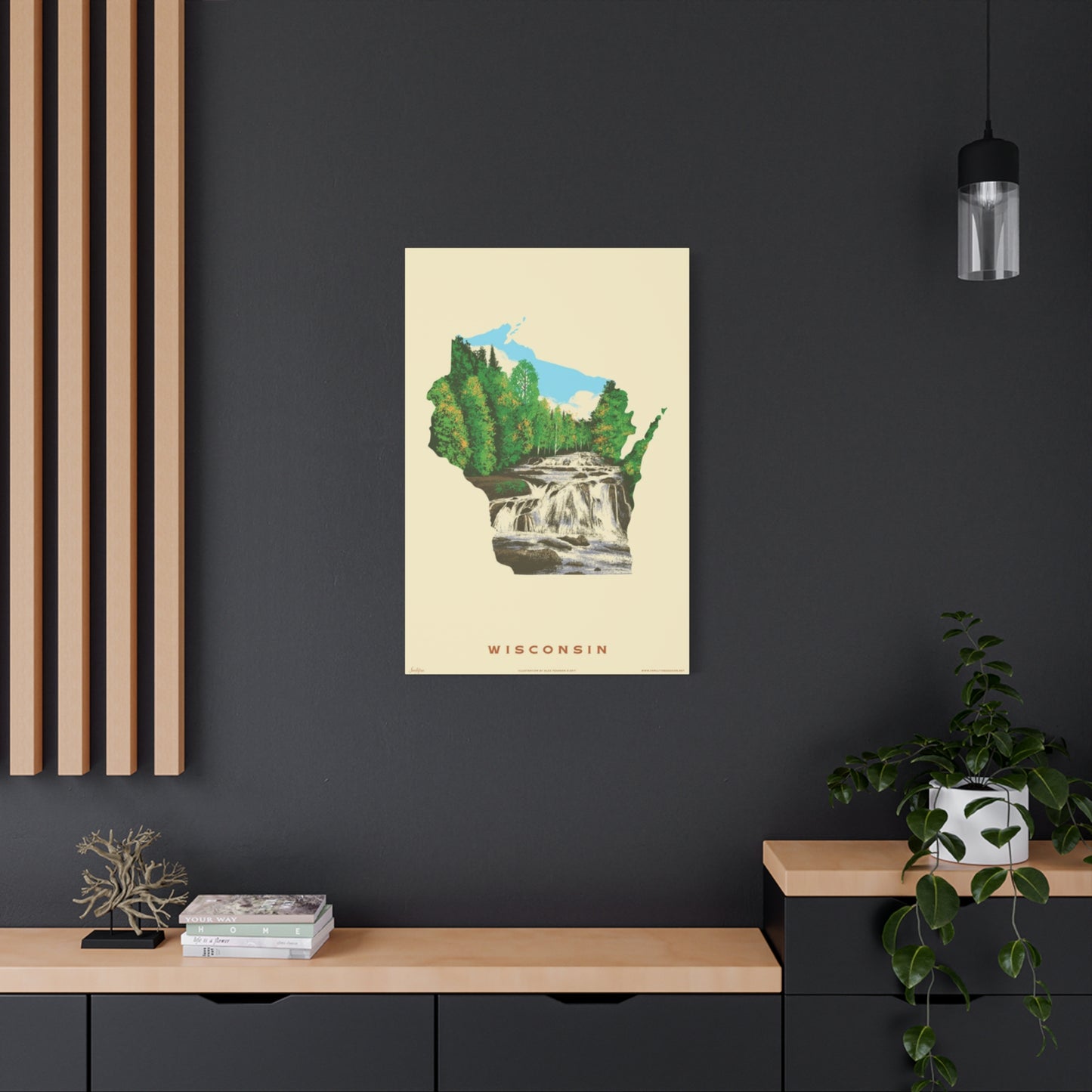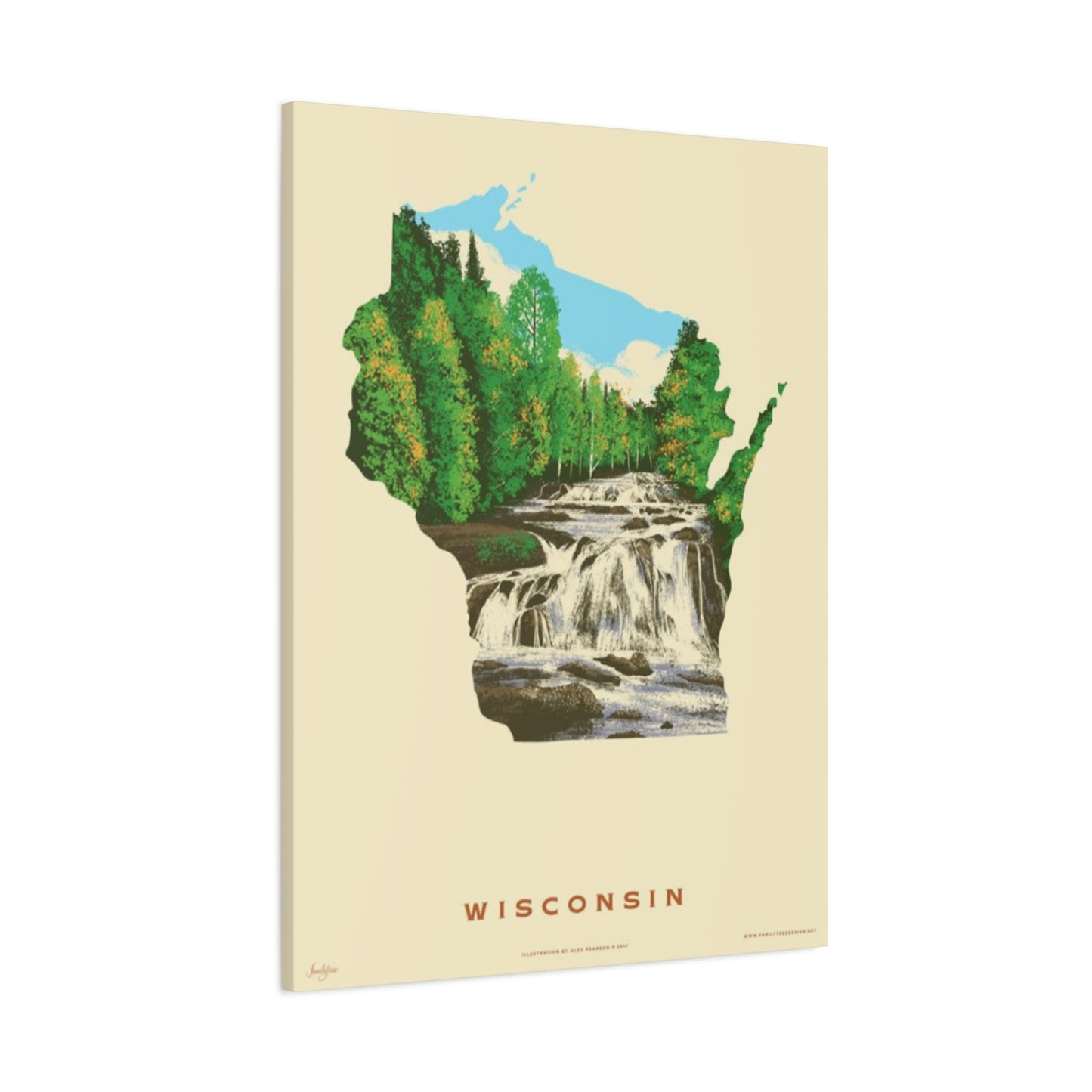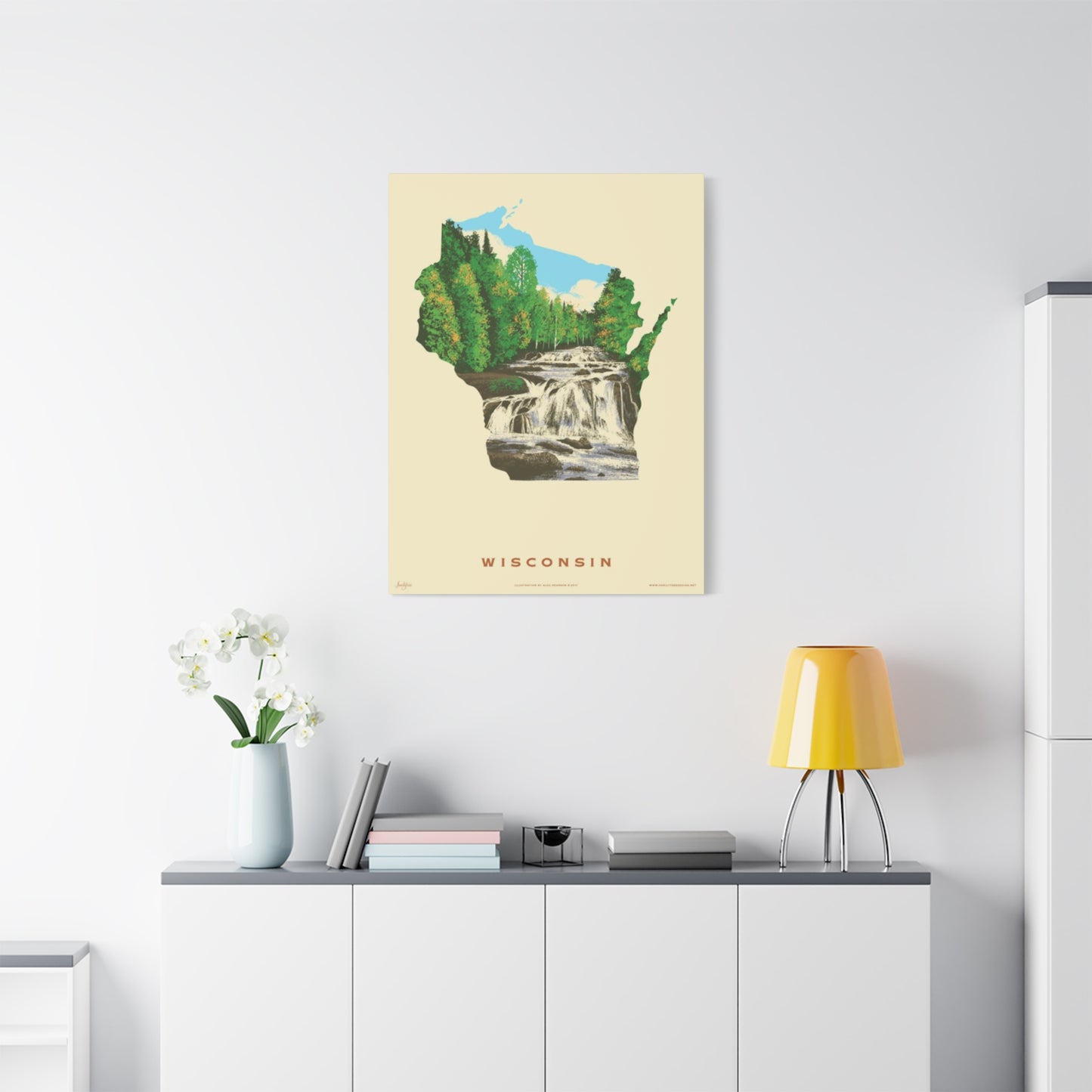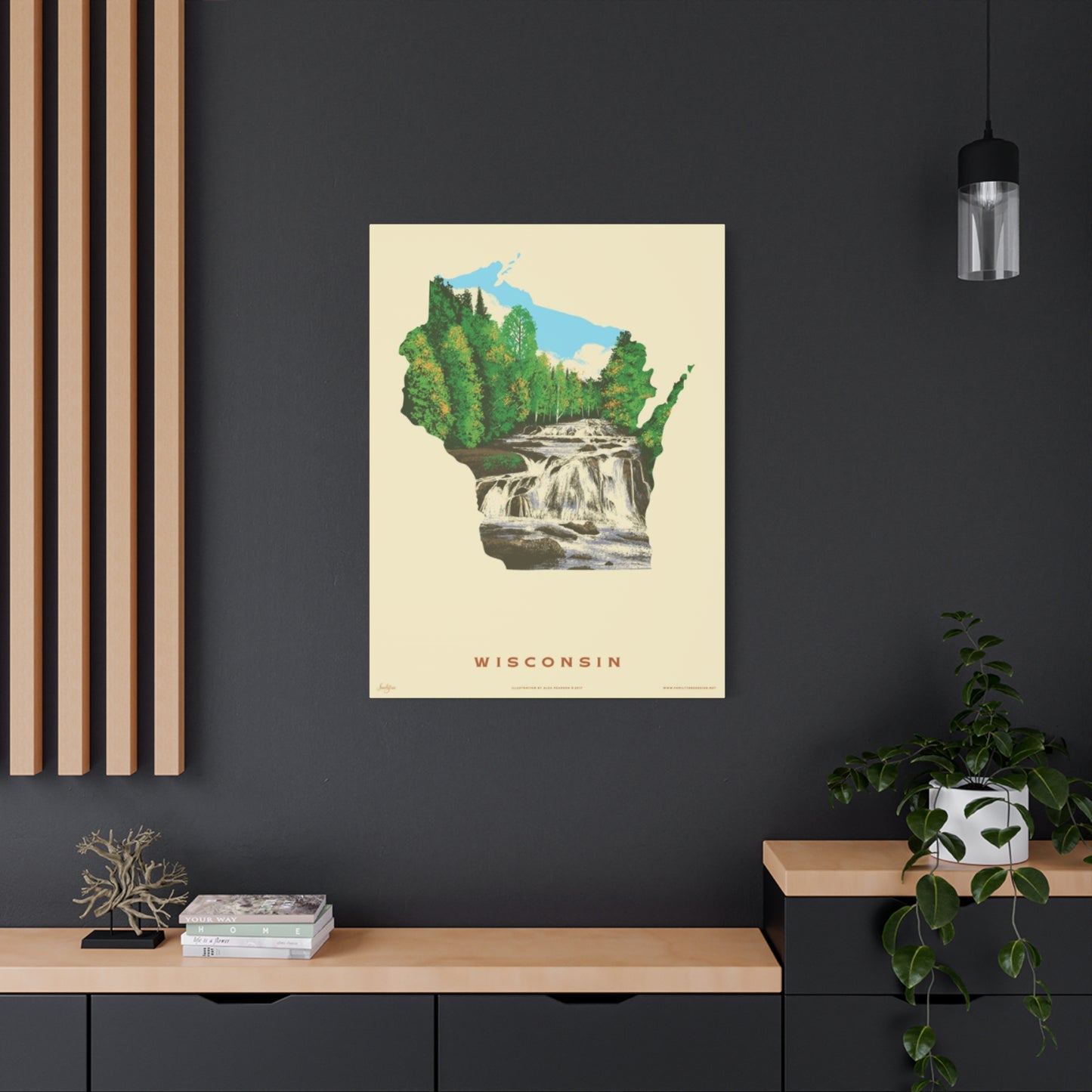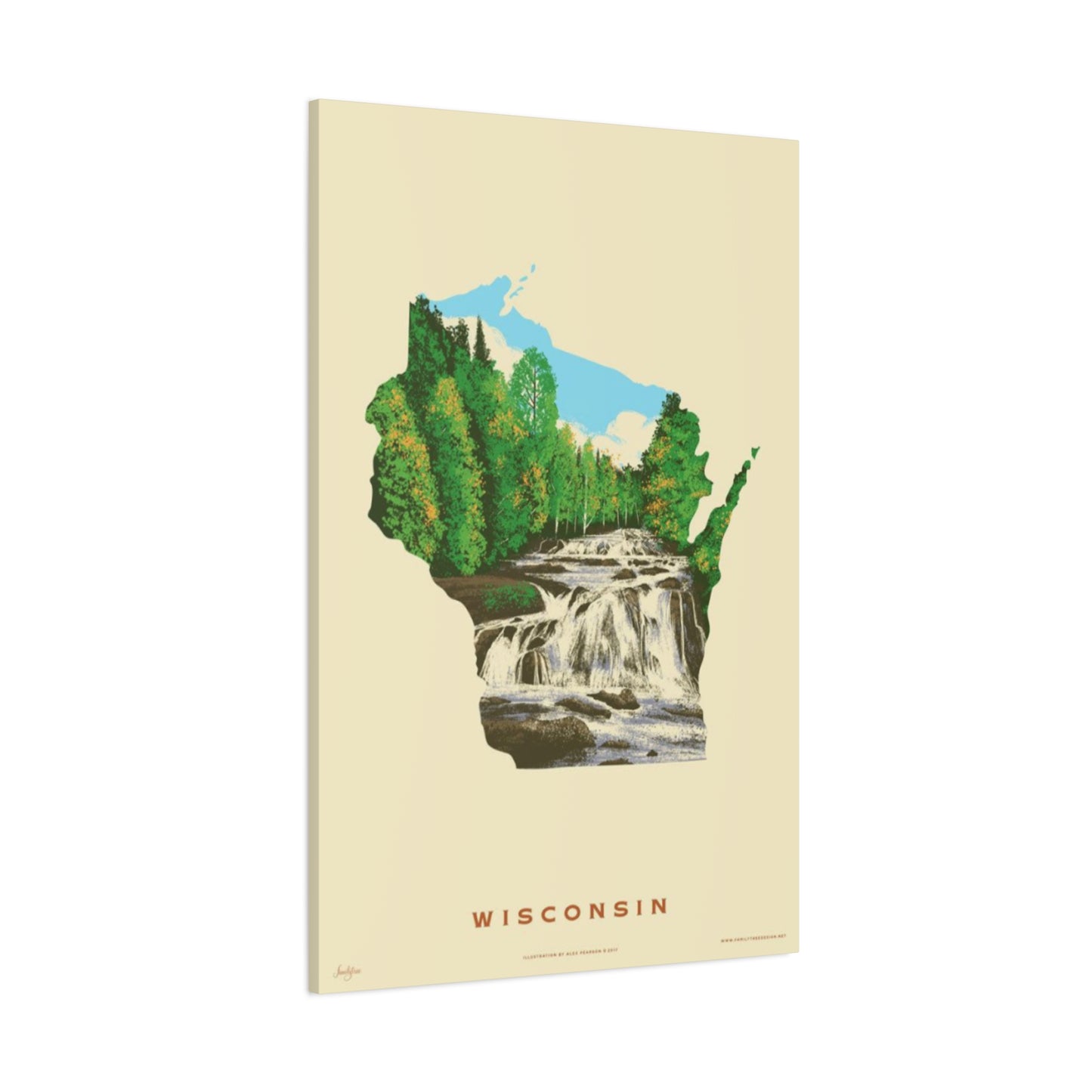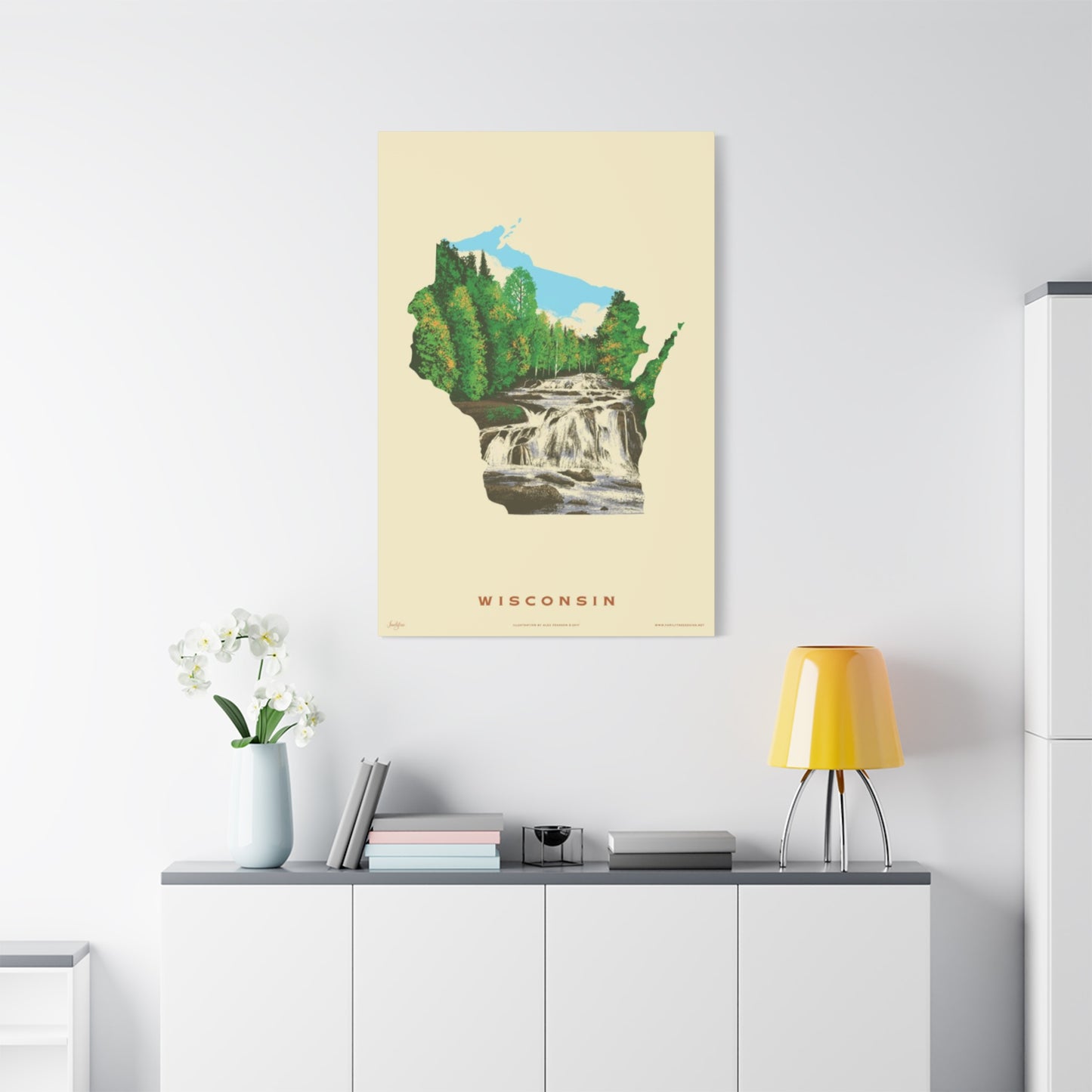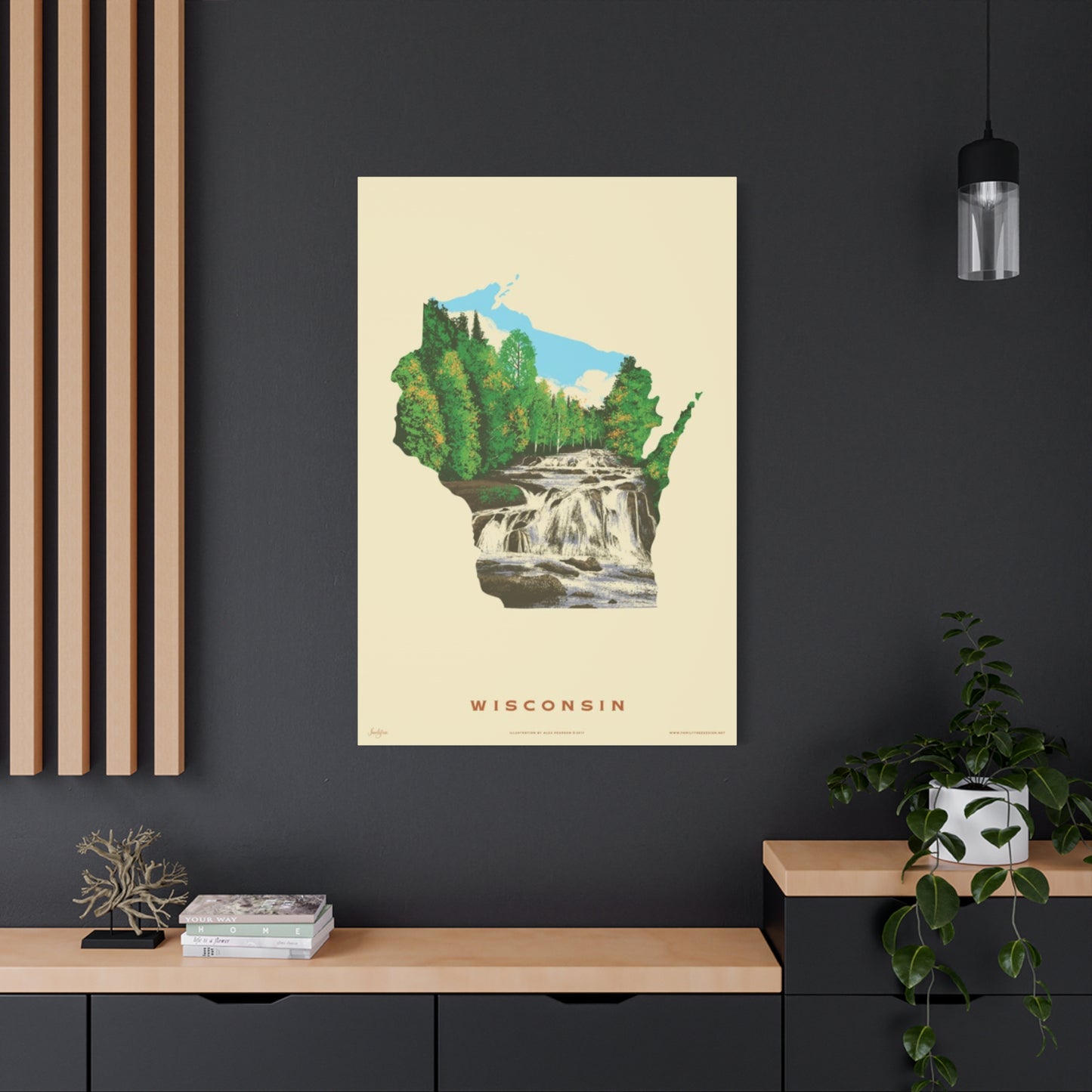Transform Your Space with Wisconsin National Park Wall Art: A Midwest Nature Lover’s Guide
When it comes to celebrating the breathtaking landscapes of America's heartland, few states offer the visual splendor and natural diversity found throughout Wisconsin. From the dramatic cliffs overlooking Lake Superior to the serene forests filled with cascading waterfalls, this Midwestern gem provides endless inspiration for those seeking to bring nature's magnificence into their living environments. The growing popularity of artwork featuring these remarkable locations reflects a deeper appreciation for regional beauty and the desire to maintain a connection with the outdoors, even when spending time indoors.
The tradition of displaying artwork that celebrates natural landmarks dates back centuries, but modern homeowners have embraced this practice with renewed enthusiasm. Today's collectors and decorating enthusiasts recognize that pieces showcasing beloved outdoor destinations serve multiple purposes: they commemorate meaningful experiences, inspire future adventures, and create focal points that enhance residential aesthetics. For those who have explored Wisconsin's protected lands or dream of doing so, these visual representations offer daily reminders of nature's extraordinary artistry.
This comprehensive guide explores the many facets of acquiring, selecting, and displaying artwork that celebrates Wisconsin's most treasured natural locations. Whether you're drawn to dramatic coastal scenes, peaceful woodland settings, or dramatic geological formations, you'll discover how these pieces can elevate your surroundings while honoring the remarkable beauty found throughout the Badger State.
Wisconsin-Inspired Nature Prints
The movement toward incorporating regional natural beauty into residential and commercial settings has gained tremendous momentum in recent years. Wisconsin offers an exceptional array of ecosystems and geological features that translate beautifully into artistic representations. From the northern forests thick with evergreens to the limestone bluffs rising above rivers and lakes, the state's topography provides artists with countless subjects worth capturing.
Contemporary printmaking techniques have revolutionized how we can bring these scenes into our homes. High-quality reproduction methods ensure that the subtle color gradations of a autumn forest or the crystalline clarity of a frozen waterfall are preserved with remarkable fidelity. Digital printing technologies allow for exceptional detail retention, while traditional lithography and screen printing methods offer unique textural qualities that many collectors find appealing.
The variety of available formats means that virtually any decorating preference can be accommodated. Large-format prints make bold statements in spacious rooms, while smaller pieces work perfectly in intimate settings or as part of gallery arrangements. The flexibility of modern printing allows for customization in terms of size, substrate material, and finishing options, ensuring that each piece can be tailored to specific requirements.
Regional artists who specialize in capturing Wisconsin's natural beauty often bring intimate knowledge of their subjects to their work. Many spend countless hours exploring locations during different seasons and weather conditions, seeking the perfect moment when light, atmosphere, and composition align. This dedication results in imagery that resonates with authenticity and captures the true essence of these remarkable places.
Collectors appreciate that nature-inspired prints offer versatility that extends beyond aesthetic appeal. These pieces serve as conversation starters, educational tools for children learning about local ecosystems, and meditative focal points that can reduce stress and promote feelings of calm. Research in environmental psychology supports the idea that exposure to nature imagery, even in two-dimensional form, can positively impact mood and cognitive function.
The seasonal variation throughout Wisconsin provides artists with dramatically different palettes to work with throughout the year. Spring brings delicate wildflowers and fresh green foliage, summer offers lush vegetation and brilliant blue skies, autumn transforms forests into tapestries of red, orange, and gold, while winter creates stark, minimalist compositions with snow-covered landscapes and ice formations. This seasonal diversity means collectors can select pieces that reflect their favorite times of year or create rotating displays that acknowledge changing seasons.
When selecting prints inspired by Wisconsin's natural environments, consideration of color harmony with existing furnishings proves important. The earthy tones prevalent in many woodland scenes complement a wide range of decorating schemes, from rustic farmhouse styles to contemporary minimalist approaches. Coastal scenes featuring the deep blues and greens of the Great Lakes provide cooling visual elements that work particularly well in warm-toned rooms.
The growing awareness of sustainable production practices has influenced the market for nature-themed artwork. Many producers now offer prints created using environmentally responsible methods, including water-based inks, recycled paper stocks, and sustainably harvested frame materials. For those passionate about conservation, these options allow them to celebrate natural beauty while supporting practices that help preserve the very landscapes they admire.
Educational institutions, healthcare facilities, and corporate environments have increasingly incorporated regional nature imagery into their design schemes. The calming effects of nature scenes make them particularly appropriate for medical settings, while their ability to create a sense of place makes them valuable in offices and public buildings. Schools use such artwork to foster connections between students and local ecosystems, supporting environmental education initiatives.
Scenic Views from Apostle Islands
The Apostle Islands archipelago represents one of Wisconsin's most distinctive and visually captivating natural features. Located in Lake Superior off the Bayfield Peninsula, this collection of twenty-two islands offers dramatic scenery that has captivated artists and photographers for generations. The combination of rugged shorelines, pristine forests, historic lighthouses, and remarkable geological formations creates endless opportunities for stunning visual compositions.
The sandstone sea caves that characterize much of the archipelago's shoreline rank among the most photographed natural features in the Great Lakes region. These formations, carved over millennia by the relentless action of wind and waves, display intricate patterns and warm, earthy colors that contrast beautifully with the cool blues and greens of Lake Superior. During summer months, kayakers can explore these caves from water level, while winter transforms them into magical grottos adorned with icicles and frozen curtains.
Artwork featuring these remarkable formations captures the interplay between solid rock and moving water, permanence and change. The varied lighting conditions throughout the day create dramatically different moods, from the soft pastels of dawn to the golden glow of sunset to the mysterious shadows of overcast days. Artists who specialize in this subject matter often return repeatedly to capture these variations, building collections that showcase the same locations under different conditions.
The islands themselves, with their dense forests and rocky shores, provide additional subject matter for artistic interpretation. Several islands feature historic lighthouses that have guided mariners through these treacherous waters since the nineteenth century. These structures, often dramatically positioned on prominent points or small rocky islets, add human interest to compositions while serving as reminders of the region's maritime heritage.
Collectors drawn to Apostle Islands imagery appreciate the sense of remote wilderness these pieces convey. In our increasingly urbanized world, scenes of pristine shorelines and uninhabited islands offer visual escapes to places where natural processes still dominate. The relatively undeveloped character of the archipelago, protected within a national lakeshore designation, ensures that these landscapes retain their wild character.
The technical challenges of capturing Apostle Islands scenery appeal to serious photography and art collectors. The dynamic range required to properly expose both bright sky and shadowed cave interiors tests artistic skill, while the logistics of accessing remote locations by boat add elements of adventure and dedication to the creative process. Works that successfully navigate these challenges often command premium prices in the collector market.
Seasonal variation affects the appearance of these islands dramatically. Summer brings lush vegetation and recreational boaters, creating lively scenes filled with activity. Autumn transforms the forests into colorful displays visible from the mainland. Winter, however, produces the most dramatic transformations, when extreme cold creates extensive ice formations along the shoreline and occasionally allows access to the sea caves by foot across the frozen lake surface.
The color palettes associated with Apostle Islands imagery tend toward cool tones, with abundant blues, greens, and the warm tans and oranges of sandstone providing contrast. These colors work particularly well in settings with neutral backgrounds, where they can serve as accent elements. The horizontal orientation of many shoreline compositions makes them ideal for placement above sofas, beds, or console tables.
For those who have personally explored the archipelago, artwork depicting these scenes carries additional emotional resonance. These pieces serve as tangible reminders of kayaking adventures, lighthouse tours, or winter hikes to the ice caves. Gift-givers often select Apostle Islands artwork for recipients who have expressed interest in visiting the region, providing both decorative value and inspiration for future travel.
Ice Caves to Canvas: Wisconsin Wonders
Wisconsin's winter landscapes offer some of the most spectacular and ephemeral natural displays found anywhere in North America. The formation of ice caves along the shores of Lake Superior creates temporary masterpieces that exist for only a few weeks each year, when conditions of extreme cold, wave action, and temperature fluctuation combine to produce extraordinary results. These frozen wonderlands have captured public imagination and inspired countless artists to document their fleeting beauty.
The process of ice cave formation begins when waves splash against shoreline cliffs during periods of intense cold. The spray freezes upon contact with rock faces, gradually building up layers of ice that eventually create curtains, columns, and intricate formations. Wind-blown snow adds to the accumulation, while fluctuating temperatures cause melting and refreezing that creates the translucent blue ice that appears so magical in photographs and paintings.
Artists who capture these scenes face unique challenges. The formations change daily as new ice accumulates and existing structures evolve. Weather conditions must be precisely right for safe access, limiting opportunities for on-site work. Many artists therefore work from photographs taken during brief windows of opportunity, later translating these reference materials into finished pieces in the comfort of their studios.
The color palette of ice cave imagery differs markedly from most other natural subjects. The deep blues of thick ice, the white of snow and frost, and the warm tones of sandstone create striking contrasts. Light filtering through ice produces ethereal glows, while shadows within caves add mysterious depth. These unusual color combinations make ice cave artwork particularly effective as statement pieces that draw attention and spark conversation.
The temporary nature of these formations adds philosophical dimensions to artwork depicting them. Each season's ice caves differ from those of previous years, making each formation unique and unrepeatable. This impermanence resonates with viewers on multiple levels, serving as reminders of nature's constant change and the value of experiencing beauty in the present moment.
Beyond the famous sea caves of the Apostle Islands, Wisconsin harbors numerous other locations where winter creates spectacular ice formations. Waterfalls throughout the state freeze into dramatic displays, with water still flowing behind veils of ice creating movement within otherwise static scenes. Cliffs and overhangs develop massive icicles, some reaching several stories in height, creating cathedral-like spaces beneath them.
The popularity of ice cave imagery has grown substantially with increased social media sharing of winter adventures. Images of people standing within glowing blue caverns or walking past towering ice formations have gone viral repeatedly, introducing broader audiences to these Wisconsin wonders. This visibility has translated into increased demand for artwork capturing these subjects, both from those who have personally experienced them and those inspired by seeing them online.
Technical considerations when reproducing ice cave imagery include color accuracy and dynamic range. The subtle gradations of blue within ice and the extreme contrast between bright snow and dark shadows require careful attention during printing or painting processes. High-quality reproductions preserve these nuances, while inferior versions may lose the delicate color transitions that make these scenes so captivating.
Framing choices significantly impact how ice cave artwork presents. Many collectors prefer simple, contemporary frames that don't compete with the imagery's inherent drama. Matting in cool grays or whites maintains the winter atmosphere, while warmer mats can provide pleasing contrast. Some opt for float mounting techniques that allow the print itself to appear suspended within the frame, adding dimensional interest.
The use of ice cave imagery in commercial settings has expanded beyond traditional hospitality and tourism businesses. Healthcare facilities use these calming scenes in patient areas, while corporate offices select them to project environmental awareness and appreciation for natural beauty. The unique subject matter ensures these pieces stand out from more common landscape choices.
Artwork Celebrating Devil's Lake State Park
Devil's Lake State Park ranks as Wisconsin's most visited state park, drawing millions of visitors annually to its dramatic 500-foot quartzite bluffs surrounding a pristine 360-acre lake. This geological wonder, formed when glacial moraines blocked a ancient river gorge, provides spectacular scenery that has made it a favorite subject for artists working in various media. The park's accessibility and diverse features make it an ideal subject for both professional artists and serious amateurs.
The distinctive purple-hued quartzite that forms the bluffs creates unique visual characteristics not found elsewhere in the state. This ancient rock, among the hardest in North America, has weathered into massive blocky formations that provide technical rock climbing challenges and dramatic backdrops for photography. The warm tones of the rock contrast beautifully with the surrounding vegetation and the deep blue of the lake, creating naturally harmonious color schemes.
Artists capturing Devil's Lake scenes have numerous compositional options. Wide-angle views from the shore encompass the full sweep of bluffs rising on opposite sides of the lake, conveying the grandeur of the setting. Closer perspectives from the top of the bluffs looking down emphasize the dramatic elevation change and provide opportunities to include human figures that establish scale. Detail shots of individual rock formations, trees clinging to cliff faces, or patterns in the stone offer more intimate interpretations.
The park's popularity means that many Wisconsin residents have personal connections to this location. Family hiking trips, rock climbing adventures, swimming excursions, and autumn color tours create memories that artwork can help preserve. Purchasing pieces depicting Devil's Lake allows people to maintain daily visual connections to a place that holds significance in their personal histories.
Seasonal changes dramatically alter the park's appearance, providing artists with constantly evolving subject matter. Spring brings delicate wildflowers and fresh green foliage that softens the stark rock faces. Summer's full canopy creates deep shadows and lush frames for views across the water. Autumn transforms the hardwood forests into spectacular displays of red, orange, and yellow that cascade down the bluff faces. Winter strips away vegetation to reveal the underlying geological structure while adding snow-covered trees and ice formations along the shoreline.
The variety of artistic styles applied to Devil's Lake subject matter reflects the diversity of the artist community drawn to this location. Traditional landscape painters create works emphasizing atmospheric effects and natural light. Photographers explore different times of day and weather conditions to capture unique moments. Digital artists manipulate imagery to create interpretive versions that emphasize particular aspects or moods. This stylistic range ensures that collectors can find pieces that align with their aesthetic preferences.
Historical artwork depicting Devil's Lake provides fascinating glimpses into how the area appeared before modern development. Nineteenth-century paintings and early twentieth-century photographs show the bluffs before the construction of roads and facilities, offering perspectives that can no longer be replicated. These historical pieces appeal to collectors interested in Wisconsin history and the evolution of the landscape over time.
The technical challenges of capturing Devil's Lake's scale and drama push artists to develop their skills. The extreme elevation changes create complex lighting situations as some areas receive direct sun while others remain in shadow. The reflective surface of the lake adds another variable, requiring careful exposure decisions. Successfully navigating these challenges results in compelling imagery that effectively conveys the power and beauty of this remarkable location.
For visitors who have hiked the challenging trails to the bluff tops, artwork depicting views from these vantage points carries special meaning. The physical effort required to reach these overlooks makes the resulting vistas more memorable, and having a visual reminder of both the view and the achievement enhances the piece's personal significance.
Capturing Fall in Wisconsin Through Prints
Autumn in Wisconsin ranks among the most spectacular seasonal displays anywhere in North America. The state's extensive deciduous forests, particularly in the northern and central regions, transform into living masterpieces of color during September and October. The combination of climate, geography, and forest composition creates conditions ideal for intense fall color that draws tourists from around the world and provides endless inspiration for artists.
The science behind fall color involves the breakdown of chlorophyll as days shorten and temperatures cool, revealing previously masked pigments and triggering the production of anthocyanins in response to sunlight and cool nights. Wisconsin's variable weather patterns, with warm sunny days and cold nights, create optimal conditions for brilliant color development. The state's mix of maple, oak, aspen, birch, and other deciduous species ensures variety in both color and timing of peak displays.
Artists capturing autumn scenes work within a relatively narrow window when colors reach their most intense and before wind and rain strip leaves from branches. This temporal pressure adds urgency to the creative process and means that each year's autumn collection represents a unique moment in time. The ephemeral nature of fall color makes artwork depicting these scenes particularly valued, as it allows year-round appreciation of beauty that naturally exists for only a few weeks.
Compositional approaches to autumn imagery vary widely. Sweeping forest vistas showcase the overall impact of color across large areas. Close-up studies of individual trees highlight the intricate patterns and color variations within single specimens. Reflection shots in calm lakes or rivers double the visual impact by mirroring colorful shorelines. Backlit leaves become translucent jewels when captured with proper lighting. Each approach offers distinct aesthetic qualities and emotional impacts.
The color psychology associated with autumn hues influences how these pieces affect viewers. Warm reds, oranges, and yellows create feelings of warmth, energy, and coziness. These colors stimulate without overwhelming, making them excellent choices for living areas where people gather. The inclusion of cooler tones—the blues of sky and water, the remaining greens of evergreens—provides visual balance and prevents the composition from becoming too dominated by warm tones.
Wisconsin's varied geography means autumn displays differ significantly across regions. The northern forests, heavy with maple and aspen, tend toward yellows and oranges with accent reds. Central regions offer more oak, providing russet and burgundy tones. The western valleys, where mixed hardwoods dominate, present the most varied palettes. Collectors often select artwork depicting regions they've personally explored or that represent their favorite autumn destinations.
The popularity of autumn imagery for home decoration peaks in late summer and early fall as people prepare their environments for seasonal transitions. However, high-quality autumn artwork remains appropriate year-round, particularly in regions where winter months are long and gray. These colorful pieces provide visual warmth and brightness during periods when the natural landscape outside appears dormant and colorless.
Technical considerations in reproducing autumn colors include accurate color matching and appropriate contrast levels. The vivid hues of peak fall color must be rendered faithfully without appearing oversaturated or artificial. Printing on papers with slight warmth in their base tone can enhance autumn imagery, while cooler papers may make colors appear less vibrant. Professional-grade printing equipment and color management systems ensure consistency and accuracy.
The cultural associations of autumn extend beyond simple aesthetic appreciation. The season represents harvest, preparation, and transition, themes that resonate deeply with many people. Artwork capturing autumn scenes can serve as visual metaphors for life stages, the passage of time, and the beauty inherent in change. These deeper meanings add layers of significance beyond surface beauty.
Autumn prints pair particularly well with certain decorating schemes. Rustic and farmhouse styles naturally complement woodland autumn scenes. Traditional settings with warm wood tones find harmony with fall colors. Even contemporary minimalist approaches can incorporate autumn imagery, particularly when pieces feature clean compositions and controlled color palettes. The versatility of autumn subjects makes them accessible to decorators with varying aesthetic preferences.
Rustic Decoration with Wisconsin Themes
The aesthetic movement toward rustic and nature-inspired decorating has created increased interest in artwork that reflects these values. Wisconsin's extensive forests, rural character, and outdoor recreation culture make it an ideal source of imagery for those seeking to create environments that celebrate natural materials, simplified living, and connections to the land. The rustic decorating approach emphasizes authenticity, warmth, and comfort while rejecting excessive refinement or pretension.
Characteristics of rustic decorating include the use of natural materials like wood, stone, and leather; earthy color palettes dominated by browns, greens, and warm neutrals; and the incorporation of elements that reference outdoor activities and wildlife. Artwork serves as a crucial component in establishing and reinforcing these themes, with selections typically featuring natural landscapes, wildlife, outdoor recreation scenes, or botanical subjects.
Wisconsin's lumber industry heritage and continuing forestry operations make wood-related imagery particularly appropriate for rustic settings. Scenes of towering pines, forest clearings, wooden footbridges, and rustic cabins all resonate with this aesthetic. The visual weight and warmth of wood-toned imagery harmonizes naturally with the exposed beams, wood paneling, and rustic furniture common in this decorating style.
The relationship between rustic decorating and conservation values creates interesting intersections. Many who adopt rustic aesthetics do so partly from environmental convictions, seeking to reduce consumption, appreciate natural beauty, and maintain connections to ecosystems. Artwork depicting protected lands aligns with these values while providing visual reinforcement of the landscapes conservationists work to preserve. This connection between aesthetics and ethics adds meaning beyond pure decoration.
Scale considerations become particularly important in rustic settings, which often feature large, open areas with high ceilings. Artwork must be sized appropriately to avoid being overwhelmed by architectural elements. Larger pieces or groupings of multiple smaller works help fill vertical spaces and create visual impact proportional to room dimensions. Oversize prints or canvas wraps work particularly well in these environments.
The frame selection significantly influences how artwork integrates into rustic settings. Heavy wooden frames in natural finishes complement the aesthetic beautifully, while ornate gilded frames would appear incongruous. Many opt for simple frames in barn wood, reclaimed lumber, or rough-hewn timber that reinforce rustic themes. Some pieces work well with minimal or no framing, particularly canvas wraps that extend around the edges of stretcher bars.
Grouping strategies for rustic settings often favor symmetrical or grid-based arrangements that provide visual order without feeling overly formal. Three pieces of similar size arranged horizontally above a sofa creates a classic composition. Vertical pairs flanking a fireplace or doorway establish balance. Larger salon-style groupings work well in entrance areas or along stairwells, particularly when unified by consistent framing or matting choices.
The authentic versus manufactured rustic debate influences artwork selection. True rustic style celebrates real places, actual wildlife, and genuine materials rather than stylized or idealized versions. Collectors committed to authentic rustic aesthetics seek artwork that documents real Wisconsin locations rather than generic or composite scenes. This preference for specificity and authenticity extends to the selection of locally made frames and the support of regional artists.
Lighting design plays a crucial role in showcasing artwork within rustic settings. The warm light from wood fires, oil lamps, and tungsten fixtures affects how colors appear and creates flickering, dynamic illumination quite different from steady artificial light. Artwork with warm tones and strong contrast works particularly well under these conditions, remaining visible and engaging even in relatively dim lighting. Proper picture lights can ensure pieces remain visible while maintaining the overall atmospheric lighting that makes rustic settings so appealing.
The seasonal flexibility of rustic decorating allows for rotating artwork displays that acknowledge changing seasons. Summer pieces might emphasize lush forests and water recreation. Autumn naturally fits rustic aesthetics with harvest and foliage themes. Winter scenes of snow-covered forests or frozen lakes maintain appropriate character. Spring imagery of woodland wildflowers or rushing streams completes the cycle. This rotation keeps decorating schemes fresh while accommodating the extensive collections many rustic enthusiasts accumulate.
Poster Art from Wisconsin's Protected Lands
The tradition of poster art celebrating outdoor destinations traces its roots to early twentieth-century promotional efforts by railroads, tourism bureaus, and conservation organizations. These graphic designs, with their bold colors, simplified forms, and strong typography, created memorable images that promoted travel while establishing the visual vocabulary we still associate with recreational destinations. Modern poster art inspired by Wisconsin's protected areas continues this tradition while incorporating contemporary design sensibilities and production technologies.
The artistic approach used in poster design differs significantly from photographic reproduction or realistic painting. Designers typically simplify scenes to essential elements, eliminate distracting details, and manipulate colors for maximum impact rather than strict accuracy. This graphic approach creates artwork that reads clearly from a distance and maintains visual interest upon closer examination. The combination of immediate impact and sustainable interest makes poster art particularly effective for public spaces and areas with significant foot traffic.
Typography plays a crucial role in poster design, with location names, dates, or commemorative text integrated into the overall composition. The selection of appropriate typefaces requires understanding of how letterforms convey mood and historical associations. Fonts evoking specific eras can place designs within tradition or mark them as contemporary. The relationship between text and imagery must be carefully balanced to ensure neither dominates inappropriately.
Color choices in poster art often depart significantly from natural observation. Designers may intensify hues for emotional impact, use unexpected color combinations to attract attention, or limit palettes to two or three shades for graphic punch. These artistic licenses allow posters to stand out in visually crowded environments and create strong brand associations with particular locations. Wisconsin poster art often emphasizes the deep greens of forests, the blues of lakes and sky, and warm autumn tones, sometimes pushing these colors to near-symbolic intensity.
The vintage poster aesthetic has experienced significant revival in recent years, with designers creating new works that deliberately reference the visual language of mid-century travel posters. These pieces appeal to collectors who appreciate retro design while documenting contemporary travel experiences. The nostalgic quality of vintage-inspired poster art creates emotional resonance that connects past and present, suggesting that the timeless beauty of natural places transcends generational changes.
Limited edition poster releases create collectible value beyond purely decorative function. Artists and publishers who number and sign prints establish scarcity that appeals to serious collectors while supporting sustainable pricing structures. The market for limited edition outdoor posters has grown substantially, with some examples from popular artists commanding premium prices in secondary markets. This collectibility adds investment potential to aesthetic appeal.
The relationship between poster art and environmental advocacy deserves consideration. Many contemporary poster artists donate portions of proceeds to conservation organizations, creating direct connections between art sales and land protection efforts. This philanthropic dimension appeals to buyers who want their purchases to support causes they value. The artwork itself serves advocacy functions by raising awareness of specific locations and their conservation needs.
Display strategies for poster art differ somewhat from other artwork types. The graphic nature and bold colors of most posters allow them to function effectively without matting, particularly when framed simply. Many collectors prefer floating the poster within the frame rather than adhering it to backing board, preserving the piece's integrity and maintaining maximum value. Groupings of multiple posters from the same series or related locations create impactful displays that celebrate a region comprehensively.
The affordability of poster art relative to original paintings or limited edition photography makes it accessible to broader audiences. This democratic quality aligns with the outdoor recreation ethic that protected lands should be accessible to all people regardless of economic status. Offering attractive, affordable artwork depicting these places extends this accessibility principle into home decoration, allowing more people to maintain visual connections to cherished destinations.
Digital distribution of poster designs has created new market dynamics. Artists can offer downloadable files for customer printing, eliminating inventory and shipping costs while providing ultimate flexibility in sizing and substrate selection. This model particularly appeals to international customers and those seeking unusual dimensions. However, the quality control challenges and potential for unauthorized reproduction create complications that some artists address through watermarking or offering files only at sizes suitable for small prints.
Framed Beauty Celebrating Wisconsin's Natural Landmarks
The presentation of artwork through appropriate framing represents as much an art form as the imagery itself. The frame serves multiple functions: physical protection of the artwork, visual definition of boundaries, aesthetic enhancement of the image, and integration with surrounding decoration. For artwork celebrating Wisconsin's natural landmarks, frame selection should complement the subject matter while accommodating the setting where the piece will be displayed.
Frame style ranges from simple and contemporary to ornate and traditional, with countless variations between these extremes. Contemporary settings often favor minimal frames with clean lines and understated presence, allowing the artwork itself to dominate. Traditional rooms may accommodate more substantial frames with decorative elements that add visual weight. The key lies in achieving balance where frame and artwork work harmoniously without either overwhelming the other.
Material selection for frames influences both appearance and durability. Wood remains the most traditional and versatile choice, available in countless species, stains, and finishes. Metal frames offer sleek contemporary appeal and exceptional strength in thin profiles. Composite materials provide affordability and consistency while replicating more expensive materials. Each material brings distinct characteristics that influence the overall presentation.
Color coordination between frame, matting, and artwork requires careful consideration. Frames can match dominant colors within the image, creating harmonious integration, or provide contrasting elements that make the artwork stand out. Neutral frames in black, white, or natural wood tones offer maximum versatility and allow easy relocation or arrangement changes. Colored frames make stronger statements but limit flexibility.
Matting decisions significantly impact final presentation. Wide mats create breathing room around images, providing visual rest and focusing attention on the artwork itself. Multiple mats in complementary colors add dimensional interest and can bridge color gaps between artwork and frame. Some pieces work better without matting, particularly when the image extends to edges or when minimalist presentation is desired.
Conservation considerations become important for valuable or meaningful pieces. Museum-quality materials including acid-free mats and backing, UV-protective glazing, and archival mounting techniques ensure artwork longevity by protecting against environmental damage. While these upgrades increase initial cost, they provide long-term value by preserving artwork condition and maintaining aesthetic quality over decades.
The technical aspects of proper framing include correct mounting techniques that secure artwork without causing damage. Hinges or corners should use archival materials and reversible adhesives. Spacers may be necessary to prevent artwork from contacting glazing. Backing boards should be rigid enough to prevent warping while allowing the frame to hang flat against the wall. These technical details, while invisible in the finished product, determine how well the frame protects and presents the artwork.
Custom framing versus ready-made frames represents a trade-off between perfect fit and cost efficiency. Custom framing allows exact sizing, unlimited material choices, and professional craftsmanship but commands premium pricing. Ready-made frames offer affordability and immediate availability but require artwork to conform to standard dimensions. Many find compromise solutions by using ready-made frames with custom cutting of mats and glass.
The relationship between frame scale and wall space affects visual impact. A small frame on a large wall appears lost and ineffective, while an oversized frame in a small room can feel overwhelming. General design guidelines suggest artwork and frame should occupy two-thirds to three-quarters of the available wall space width for proportional balance. However, these rules can be intentionally broken for specific effects.
Hanging height and grouping arrangements influence how framed artwork functions within a room. The center of artwork should generally align with average eye level, approximately 57 to 60 inches from the floor. Groups should be planned as unified compositions with consistent spacing between pieces. Templates made from paper can be arranged on walls before hanging to evaluate compositions without leaving unnecessary holes.
The investment in quality framing acknowledges that artwork's presentation profoundly affects its perceived value and aesthetic impact. Even modest prints gain significance and presence when properly framed, while exceptional images can be diminished by inappropriate or cheap framing. The decision to invest in quality framing represents a commitment to creating an environment that truly honors both the artwork and the natural subjects it celebrates.
Artwork for Cabin Settings
Cabins represent a distinct decorating challenge and opportunity, blending residential comfort with outdoor recreation associations. These settings, whether used as full-time residences or vacation retreats, call for artwork that reinforces connections to natural surroundings while creating warm, welcoming environments. Wisconsin cabin culture has deep roots in the state's outdoor recreation heritage, making locally themed artwork particularly appropriate for these settings.
The architectural characteristics common to cabin construction influence artwork selection. Exposed wooden surfaces, including logs, beams, and plank walls, create textured backdrops quite different from smooth drywall. Wood's prominent grain and variation mean artwork must have sufficient visual strength to register clearly against these busy backgrounds. Colors within artwork should either harmonize with wood tones or provide enough contrast to stand apart distinctly.
Scale considerations in cabin settings often differ from traditional homes. Many cabins feature open floor plans with cathedral ceilings, creating large wall expanses that require substantial artwork for proper visual balance. The tendency toward oversized furniture and architectural elements means artwork must be sized accordingly to maintain proportional relationships. A piece that would dominate in a conventional room may appear modest in a high-ceilinged cabin with massive stone fireplaces and heavy timber framing.
The informal, relaxed atmosphere appropriate to cabin settings allows for more casual artwork arrangements than might be appropriate in formal homes. Salon-style groupings with varied frame sizes and styles create eclectic, collected-over-time appearances. Leaning large pieces against walls rather than hanging them adds to the casual aesthetic while allowing easy rearrangement. This flexibility suits the evolving nature of cabin decoration, which often accumulates layers of objects and images over years of use.
Subject matter for cabin artwork logically emphasizes outdoor themes. Local landscapes, wildlife, fishing and hunting scenes, and recreational activities all reinforce the cabin's connection to surrounding nature. For Wisconsin cabins, imagery from nearby locations creates authentic sense of place while serving as records of personal experiences and favorite destinations. The specificity of local references adds meaning beyond generic woodland scenes.
The practical realities of cabin environments affect artwork choices. Humidity fluctuations, temperature extremes, and potential exposure to smoke from fireplaces all challenge artwork preservation. Prints rather than original works may be preferable in these conditions, as their relative affordability makes potential damage less catastrophic. Protective glazing and sealed backing help safeguard pieces from environmental stresses.
Lighting in cabin settings often skews toward warm tones from wood fires, oil lamps, and tungsten fixtures. Artwork must remain visible and engaging under these conditions, which differ significantly from the bright, cool lighting common in contemporary homes. Pieces with strong contrast and warm overall color temperatures work particularly well. Dark, moody images may become nearly invisible in dimly lit cabin environments.
The multi-generational use of many cabins creates opportunities for artwork to build family histories and traditions. Pieces acquired by grandparents, added to by parents, and continued by children create visual narratives of family connections to particular places. This accumulation over time produces decoration with authentic history and emotional resonance that newly decorated spaces cannot replicate.
Seasonal occupancy patterns influence cabin decoration strategies. Families who use cabins primarily during summer may emphasize warm weather scenes and recreational themes. Those who favor winter visits might prefer snow scenes and cold-weather activities. Year-round residents have the luxury of rotating artwork seasonally or selecting pieces that transcend seasonal associations.
The increasing use of cabins for remote work has introduced new considerations for artwork selection. Pieces visible during video calls provide glimpses into personal life and interests. Many remote workers choose backgrounds that project professionalism while indicating personality, with nature-themed artwork striking appropriate balances. The cabin as workplace and retreat creates interesting design challenges that artwork can help address.
Budget considerations for cabin artwork often differ from primary residence decoration. The informal nature of cabin settings and the potential for environmental damage may lead owners to allocate smaller budgets for cabin artwork compared to their main homes. This creates opportunities for emerging artists, affordable prints, and secondhand finds that would be rejected for more formal settings but work perfectly in relaxed cabin environments.
Vintage-Style Poster Designs
The aesthetic appeal of vintage poster design continues to captivate contemporary audiences, with the bold graphics, limited color palettes, and nostalgic charm of early and mid-twentieth-century promotional artwork experiencing significant revival. Modern designers creating vintage-inspired pieces celebrating Wisconsin's natural landmarks tap into this enduring appeal while documenting contemporary appreciation for these places. The result bridges past and present, connecting today's outdoor enthusiasts with the visual language of earlier generations.
The technical characteristics of early poster printing processes influenced the aesthetic that defines vintage design. Limited color lithography required designers to work within restricted palettes, typically two to four colors. This constraint forced creative solutions that emphasized strong composition and clever color use rather than subtle gradation. Modern designers deliberately recreate these limitations to achieve authentic vintage appearance, even though contemporary technology could easily produce more complex color schemes.
Typography in vintage poster design followed conventions that contemporary eyes recognize as marking specific eras. Art Deco lettering suggests the 1920s and 1930s, while mid-century modern sans-serif fonts evoke the 1950s and 1960s. The deliberate selection of period-appropriate typefaces helps establish temporal context and creates instant visual connections to particular historical moments. For Wisconsin-themed designs, matching typography to the era when particular locations gained prominence or protection adds historical accuracy.
The simplified illustration style characteristic of vintage posters required reducing complex scenes to essential elements. Artists eliminated details that didn't contribute to immediate recognition or compositional strength. This graphic approach created images that read clearly from distances and reproduced well despite printing technology limitations. Contemporary designers emulating this style must resist the temptation to include excessive detail, understanding that restraint and simplification produce more effective results.
Color choices in vintage poster art often reflected printing economics and technical constraints rather than purely aesthetic decisions. Primaries and secondaries dominated because they reproduced reliably. The limited palette created color relationships that became stylistically characteristic of the era. Modern vintage-style designs that carefully research historical color use achieve more authentic results than those applying contemporary color theories to vintage formats.
Conclusion
Wisconsin National Park wall art offers a captivating way to bring the breathtaking beauty of the Midwest’s natural landscapes into your home, transforming your living space into a sanctuary that celebrates the rich and diverse environment of this unique region. For nature lovers and art enthusiasts alike, these artworks provide more than just decoration—they create a meaningful connection to the parks, forests, and waterways that define Wisconsin’s wild charm.
By incorporating imagery from iconic sites such as Apostle Islands, Devil’s Lake, and the Ice Age Trail, Wisconsin National Park wall art captures the essence of the state’s rugged wilderness and serene beauty. These pieces invite viewers to explore the ever-changing seasons, majestic forests, and pristine lakes that make Wisconsin a haven for outdoor enthusiasts. Whether it’s the vivid colors of autumn foliage or the tranquil stillness of a snow-covered landscape, this art evokes the sensory experiences and emotional connections associated with nature’s splendor.
What makes Wisconsin National Park wall art especially appealing is its versatility in complementing various interior styles. From rustic cabins and farmhouse-inspired homes to modern apartments and cozy cottages, these artworks effortlessly blend with diverse decor themes, adding warmth, character, and a touch of adventure. The natural color palettes—earthy greens, rich browns, and deep blues—work harmoniously to create a soothing atmosphere that promotes relaxation and mindfulness.
Beyond aesthetics, this wall art serves as a constant reminder of the importance of conservation and the need to preserve these natural treasures for future generations. It encourages homeowners to cultivate a deeper appreciation for the environment and fosters a sense of stewardship by bringing the spirit of Wisconsin’s national parks indoors. This connection to nature has been shown to reduce stress, improve well-being, and inspire a more sustainable lifestyle.
For Midwest nature lovers, transforming a space with Wisconsin National Park wall art is more than a design choice—it is an expression of identity and passion. These pieces offer a way to celebrate the beauty of local landscapes while sharing the magic of the outdoors with family, friends, and guests. They also provide inspiration for future adventures, reminding us of the endless exploration opportunities that await just beyond our doorsteps.
In conclusion, Wisconsin National Park wall art enriches living spaces by merging artistic expression with the awe-inspiring power of nature. It transforms interiors into meaningful environments that reflect the beauty, tranquility, and spirit of the Midwest’s great outdoors. Whether displayed as a striking centerpiece or as part of a curated collection, this art invites a deeper connection to the natural world and enhances the emotional ambiance of any home.
As the appreciation for regional and nature-inspired decor grows, Wisconsin National Park wall art stands out as a timeless and heartfelt choice for those seeking to bring the outdoors inside. By embracing this form of artistic celebration, you not only beautify your space but also honor the incredible landscapes that make Wisconsin a true gem of the Midwest.

















